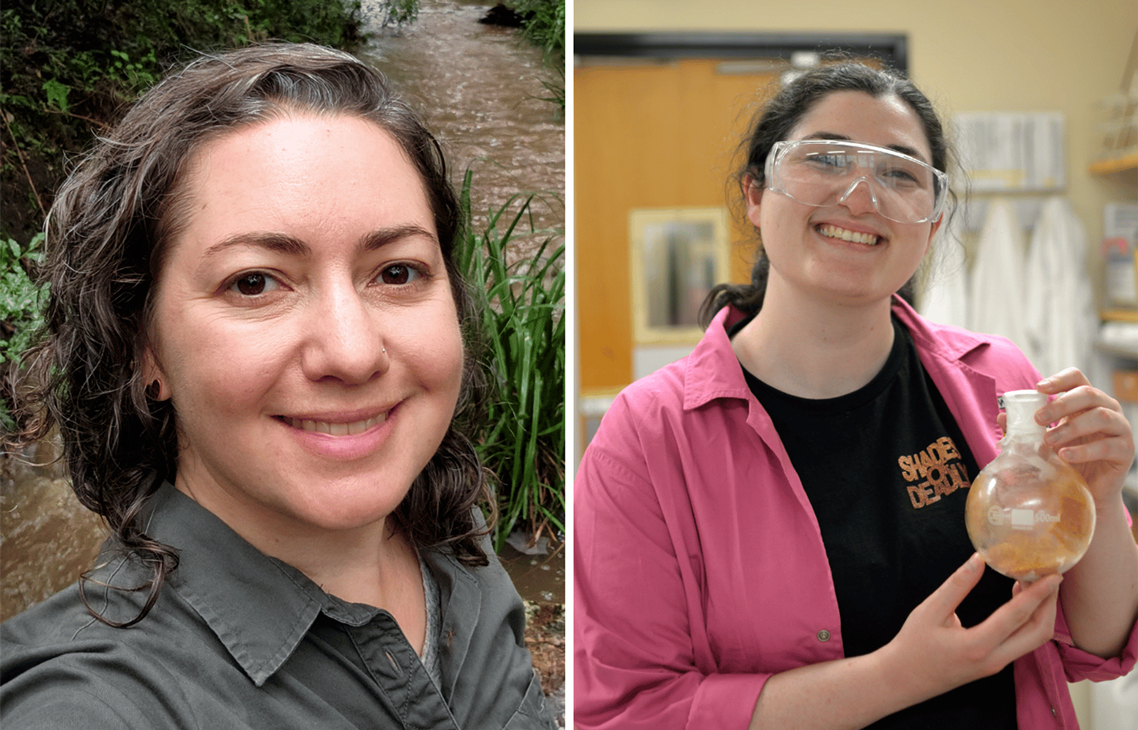Bidjara woman Michelle Hobbs and Ngugi woman Stephanie Beaupark are both incredible trailblazers in their respective scientific fields, and were named winners of 2023 Australian Academy of Science Aboriginal and Torres Strait Islander Scientist Award.
Hobbs is doing her PhD research on the management of Australian freshwater ecosystems and freshwater mussels, while Beaupark is a multi-disciplinary artist and chemist, working to highlight Indigenous knowledge.
For Hobbs, researching populations of freshwater mussel numbers around Brisbane, the Sunshine Coast and the Gold Coast is an important part of preserving and amplifying Indigenous ecological knowledge.
“Mussels have long been important to Aboriginal peoples as an important part of river health, also as a food source, and used as tools, for ceremony and in artwork,” Hobbs said.
“Aboriginal peoples have incredible knowledge of their Countries, passed down from generation to generation over very long timescales, including ecological knowledge and knowledge about water and river management.”
Hobbs will use the $20,000 prize money from the award to further her research in Canada, and is currently planning the trip to meet with other Indigenous researchers to discuss the uses and management of mussels.
She’ll also plan to go to Kentucky in the US for a First Nations workshop at the Society for Ecotoxicology and Environmental Chemistry.
Hobbs said she is very proud to represent her mob, Bidjara, in her field of freshwater ecology.
“What I bring is a different perspective on the value of clean water. It’s sacred because we all rely on it for survival,” she said.
“There is this pervasive idea in contemporary land management that ‘wild’ places are healthier without human intervention, but as Aboriginal peoples, we know that Country needs people to be healthy, that it needs careful management to be healthy.
“Aboriginal peoples have been here in these landscapes and carefully managing them for thousands of years and have an enormous wealth of detailed knowledge of water sources, ecosystem processes, and management approaches.”
Hobbs believes it is critical for communities to have the opportunity to be involved in shaping environmental research and wants to see researchers working closely with communities.
“Local Aboriginal communities are experts in understanding the environments on their respective Countries,” she said. “Being able to see the value that Indigenous peoples and their knowledges represent is something I bring to my work and is vital to future management of water in this country, particularly in the face of climate change.”
Meanwhile, Beaupark studies the colour chemistry of natural dyes from Australian native trees such as Eucalyptus cinerea, and uses an Indigenist methodology involving yarning with other Indigenous natural dye artists and weavers.
“The white version of history taught in schools when I was a child was full of both conscious and unconscious bias that I could feel embodied by my teachers and peers,” she said. “That way of teaching did not reflect the truth and how incredible Indigenous people, place, knowledges, and histories are.”
Beaupark’s nanna Esme Beaupark was an outspoken advocate for the legal battle in the 1990s for official recognition of Australian Hall as a significant social and historical place for Indigenous people.
In her speech for the Commission of Inquiry for Environment and Planning, Esme was quoted as saying: “What is taught as history is believed and remembered. The fact that in the last century, the history of this country was written deliberately excluding Aboriginal people has harmed generations of both black and white Australians… Pride in a people's history is a part of mental health”.
Beaupark credits her nanna and other ancestors for helping her instil pride in her identity.
“I am proud to be following in my ancestor's footsteps. It is an inherent nature of Indigenous knowledge that we are scientists who are continuously learning to live in partnership with Country.”
For Beaupark, there is no separation between science and arts. She believes that there’s an “imaginary disciplinary boundary” in western knowledge systems that has created limitations and blind spots in how we approach complex issues in research.
“This reductive attitude destroyed any naturally occurring interdisciplinary connections,” she said. “Western science developed short-sighted superiority towards other disciplines, creating disciplinary silos…it’s challenging to access those back-and-forth pathways in your brain.”
Beaupark has observed a recent shift in combining perspectives from both art and science, and hopes universities continue to incorporate it in their courses.
“Art and science are two approaches to trying to better understand the world and our place in it, but Western science has incredibly colonised ways of thinking and generating knowledge.”
Meet two Indigenous women who are paving new ground in science
by Women’s Agenda
Thursday 27 April 2023



